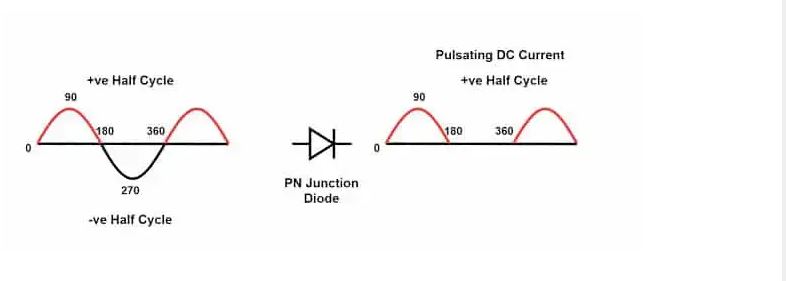In the realm of electrical engineering, the Single Phase Rectifier stands as a fundamental component. This device plays a crucial role in converting alternating current (AC) to direct current (DC), making it indispensable in various applications. In this article, we'll delve into the intricacies of single-phase rectifiers, their types, working principles, and applications.
What is a Single-Phase Rectifier?
A single-phase rectifier is an electronic device that converts AC voltage into DC voltage. The conversion process is essential because many electronic devices and circuits require DC for proper operation. AC, which is the standard form of electricity supplied to homes and businesses, needs to be converted to DC to power devices like computers, LED lighting, and various household appliances.
Types of Single-Phase Rectifiers
Single-phase rectifiers are categorized into several types based on their configuration and the nature of the rectification process. The primary types include:
1. Half-Wave Rectifier
A half-wave rectifier is the simplest form of a rectifier. It uses a single diode to convert AC to DC. During the positive half-cycle of the AC input, the diode becomes forward-biased and allows current to pass through, while during the negative half-cycle, the diode is reverse-biased and blocks the current. This results in a pulsating DC output.
2. Full-Wave Rectifier
A full-wave rectifier improves upon the half-wave design by utilizing both halves of the AC cycle. There are two main configurations of full-wave rectifiers:
a. Center-Tapped Full-Wave Rectifier
This configuration uses a center-tapped transformer and two diodes. The center tap provides a reference point, allowing each half of the AC cycle to be rectified by one of the diodes, resulting in a smoother DC output.
b. Bridge Rectifier
The bridge rectifier uses four diodes arranged in a bridge configuration. It rectifies both halves of the AC input without the need for a center-tapped transformer. This design is widely used due to its simplicity and efficiency.
Working Principle of Single-Phase Rectifiers
The working principle of a Half Wave Rectifier Formula revolves around the properties of diodes. Diodes allow current to flow in only one direction, effectively blocking the reverse flow. Here's a step-by-step explanation of how a basic single-phase rectifier works:
AC Input: The rectifier receives an AC voltage input, which oscillates between positive and negative cycles.
Diode Action: During the positive half-cycle, the diode(s) become forward-biased, allowing current to pass through and reach the load.
Blocking Reverse Current: During the negative half-cycle, the diode(s) become reverse-biased, preventing current from flowing in the reverse direction.
Pulsating DC Output: The output is a pulsating DC voltage, which can be further smoothed using filters to achieve a more stable DC output.
Applications of Single-Phase Rectifiers
Single-phase rectifiers are used in a wide range of applications due to their ability to convert AC to DC. Some common applications include:
1. Power Supplies
Rectifiers are integral to power supply units, converting the AC mains voltage to the DC voltage required by electronic devices. This includes power supplies for computers, televisions, and other household electronics.
2. Battery Charging
Battery chargers utilize rectifiers to convert AC to DC, providing the necessary voltage and current to charge batteries efficiently.
3. Radio and Communication Equipment
Rectifiers are used in radio and communication equipment to convert the AC supply into a stable DC voltage, ensuring reliable operation.
4. Industrial Applications
In industrial settings, rectifiers are used in welding machines, motor drives, and various control systems where DC voltage is required.
Conclusion
The Half Wave Rectifier Circuit is a vital component in electrical engineering, enabling the conversion of AC to DC voltage. Understanding the different types of rectifiers, their working principles, and applications helps in selecting the right rectifier for specific needs. Whether it's for powering household electronics or industrial machinery, single-phase rectifiers play a crucial role in modern electrical systems.
Visit their website to learn more services:-





Comments